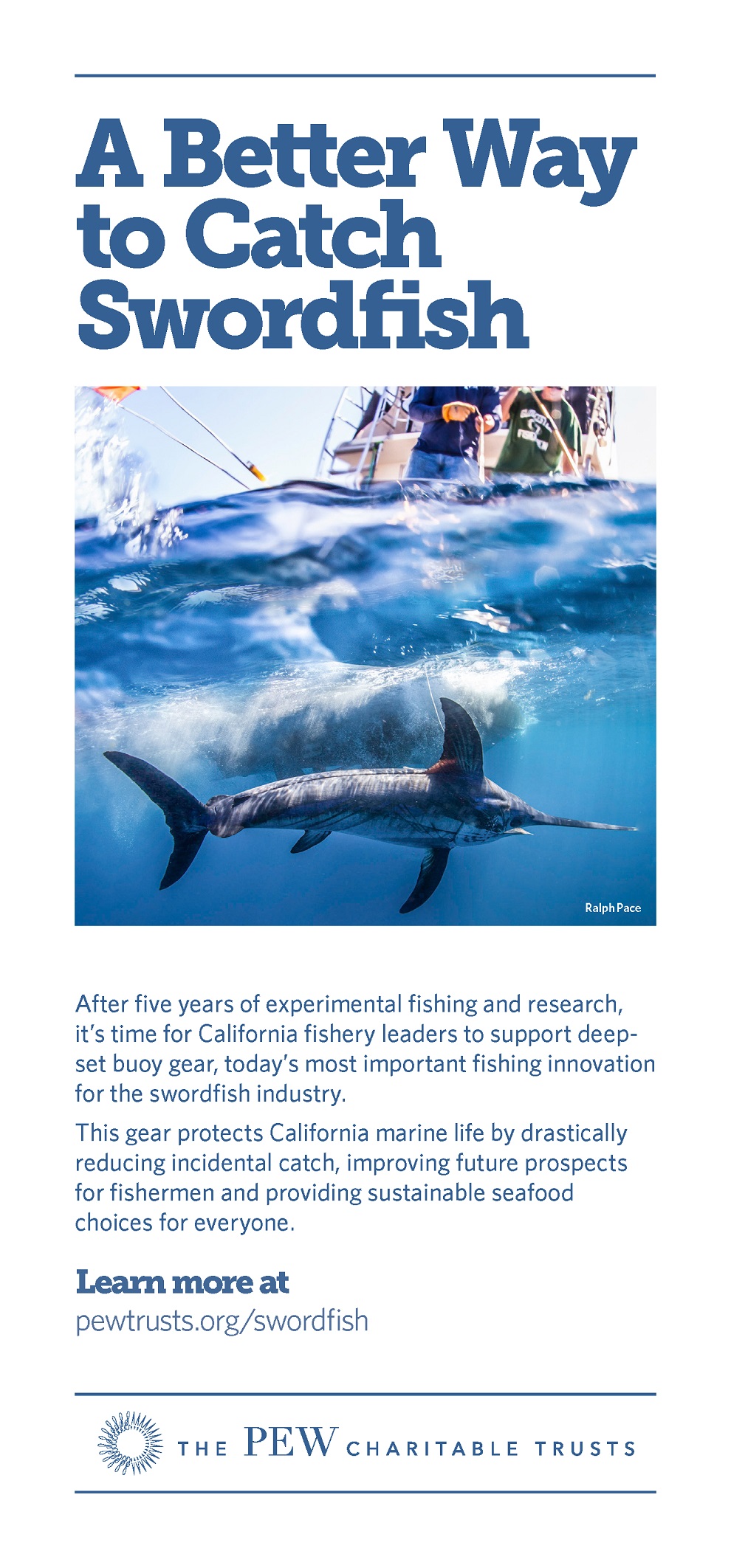Catching Swordfish, Protecting Ocean Wildlife
Update: This article was originally posted on Pew’s website on March 8, 2016. A few days later, the Pacific Fishery Management Council voted unanimously to move forward with a set of options to authorize the use of deep-set buoy gear.
Necessity is the mother of invention. In California’s swordfish fishery, the need to minimize bycatch—the unwanted catch of marine life—is fostering a type of fishing gear with real promise to provide a steady source of locally caught seafood without the collateral damage associated with drift gillnets, the dominant method of catching swordfish on the West Coast.
However, commercial fishermen can’t utilize a new fishing method just because it is an effective and selective way to catch swordfish. The Pacific Fishery Management Council (PFMC), which sets policy for ocean fishing on the West Coast, must first authorize it as an allowable gear. California’s council representatives have an opportunity to lead those efforts by putting their support behind this innovative gear type.
Deep-set buoy gear, the promising alternative I mention above, is looking viable after five years of research and experimental fishing. The gear drops hooks as deep as 1,200 feet below the ocean surface during daylight hours, targeting swordfish while minimizing interaction with fish and wildlife closer to the surface, such as dolphins, whales, and sea lions. When an indicator float shows a fish is on the line, fishermen immediately retrieve their catch. This gear proved so effective at minimizing bycatch that fishermen who used it in the research were able to keep and sell up to 94 percent of their catch.
Buoy-caught swordfish also brings a premium price for fishermen because each fish is landed and put on ice within minutes of being caught, meaning it’s of the highest quality. Experts who have handled buoy-caught swordfish extoll the quality of this seafood delicacy. With drift gillnets, a swordfish may languish in a net for hours before being landed and put on ice.
But until the PFMC officially authorizes buoy gear in the commercial swordfish fishery, and not just an experiment, seafood consumers and marine life won’t get the full benefits. Developing a market for this sustainably caught seafood will require a dependable and steady supply, meaning it will require more fishermen delivering buoy-caught swordfish on a sustained basis.
It’s a great opportunity for West Coast fishery managers to begin the process for officially authorizing deep-set buoy gear so it can be used in the years ahead: a victory for fishing communities, seafood consumers, and Pacific marine life valued by all of us. It is important for the public to encourage decision-makers to advance this process in a timely manner.
Paul Shively directs ocean conservation efforts on the West Coast for The Pew Charitable Trusts.







